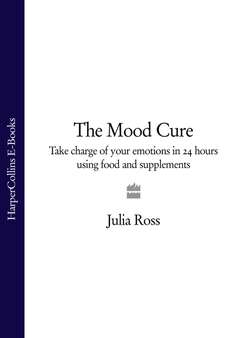Читать книгу The Mood Cure: Take Charge of Your Emotions in 24 Hours Using Food and Supplements - Julia Ross - Страница 35
Are You Getting Enough Light, Especially in Winter?
ОглавлениеSerotonin is one of the few body chemicals that is stimulated by light. And not just any light will do. How you feel may vary, depending on the type and amount of light available to you at each season of the year and even at each hour of the day. For lower-serotonin people, the late afternoon tends to be the beginning of the “unhappy hours.” Many of them hate the fall, the winter, the twilight, and the night, for good reason. More than 25 percent of Americans suffer from a special sensitivity to the natural decrease in sunlight that occurs during the fall and winter.6 Technically known as “seasonal affective disorder” (or, appropriately, SAD), this condition’s “dark cloud” symptoms significantly increase when the angle of the sun drops and serotonin levels drop along with it.
But don’t fret if you know or suspect that you suffer from winter depression. You can raise your serotonin levels any time of the year with the amino acids and other supplements I’ll be describing later. These nutrients are especially effective if you combine them with some bright light. At least half of SAD sufferers respond well to bright lamp therapy.7 And then there are supplements of vitamin D, the sunshine vitamin, which can be even more effective than bright light in helping relieve SAD.
Part of the problem is that even on a summer day, we may not get enough light. Natural sunlight ranges from 2,000 lux (a standard unit of illumination roughly equivalent to 125 watts) on a cloudy winter day to 100,000 lux on a clear summer day, but most of us spend our days indoors and get less than 100 lux a day! Being exposed to bright natural or artificial light during the day may raise your mood by raising your serotonin levels, but only if the light gets bright enough. That translates to at least thirty minutes a day within three feet of a light bulb burning 150–200 watts, which is equal to 2,500 lux (or lumens). There are stronger light boxes, but we’ve generally found 2,500-lux lamps very effective without the potential side effects of stronger lamps, including anxiety, nervousness, or even eye damage.8
If your spirits are not lifted by nutritional supplements alone, plan to spend a total of thirty to sixty minutes a day under your lamp without glasses or contacts on. Try to have your sessions before three P.M., as bright light later might suppress your sleep. Start with ten to fifteen minutes under your lamp and increase as needed.9 Make sure that the light can reach your pupils while you read, talk, or work on your computer. You should be able to feel the benefits right away.
We worked with a whole family, born in Mexico but living SADly in Northern California, who fell in love with the 2,500-lux Ott lamp in our office during their family education session. They each bought one to take home and extras to ship to other relatives also stranded too far north in the United States. The lamps, designed by John Ott, a pioneer in the study of the effect of light on behavior and health, contain full-spectrum fluorescent bulbs, providing natural as well as intense light.
Interestingly, exposure to bright light during the day not only improves your emotional outlook, it also helps your sleep. Bright light in the morning decreases your daytime levels of the hibernation-and-sleep-promoting brain chemical melatonin, but it will raise your nighttime levels, helping you to sleep well. In fact, poor sleepers with SAD respond best of all to light therapy.
In the “Resource Tool Kit,” you’ll find details on how and where to find anti-SAD lighting equipment.
